Abstract
1. The oxygen capacities of foetal and adult blood have been compared by direct measurement of their oxygen and carbon monoxide combining power. Corrections have been applied to the capacities obtained from oxygen content determinations for the presence of carboxyhaemoglobin and methaemoglobin.
2. Mean values for the capacities of foetal blood derived from oxygen and carbon monoxide content were 1·312 ml./g (S.E. ± 0·007) and 1·331 (S.E. ± 0·002) respectively, while those for adult blood were 1·306 ml./g (S.E. ± 0·006) and 1·331 (S.E. ± 0·0005) respectively.
3. For neither carbon monoxide nor oxygen was there a significant difference (P > 0·05) of capacity between adult and foetal blood. There was, however, a significant difference (P < 0·05) on comparing the two methods of measurement on each form of blood and values from both methods were significantly different (P < 0·001) from the theoretical value of 1·39 ml. oxygen/g haemoglobin derived from the molecular weight of haemoglobin.
4. These results suggest that the International Cyanmethaemoglobin Standard gives values of haemoglobin concentration which are approximately 6% higher than levels indicated by oxygen combining power.
Full text
PDF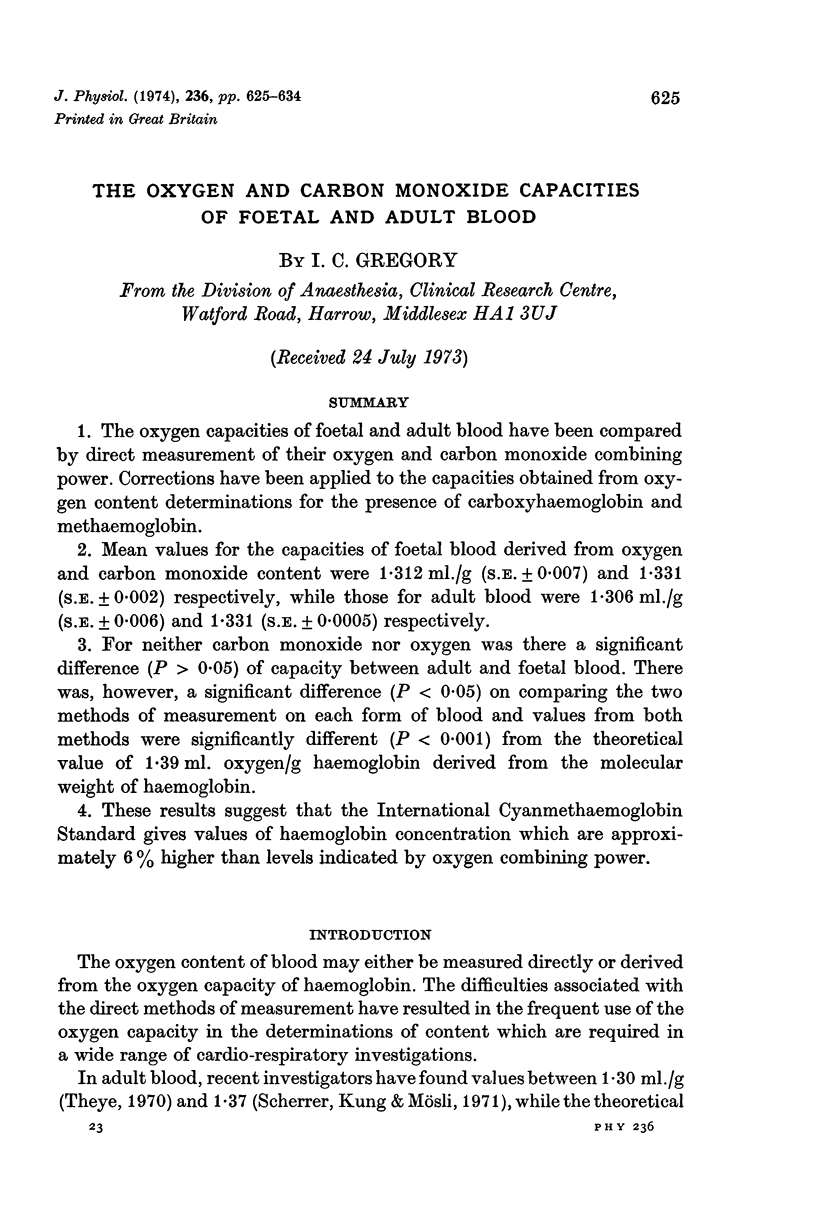
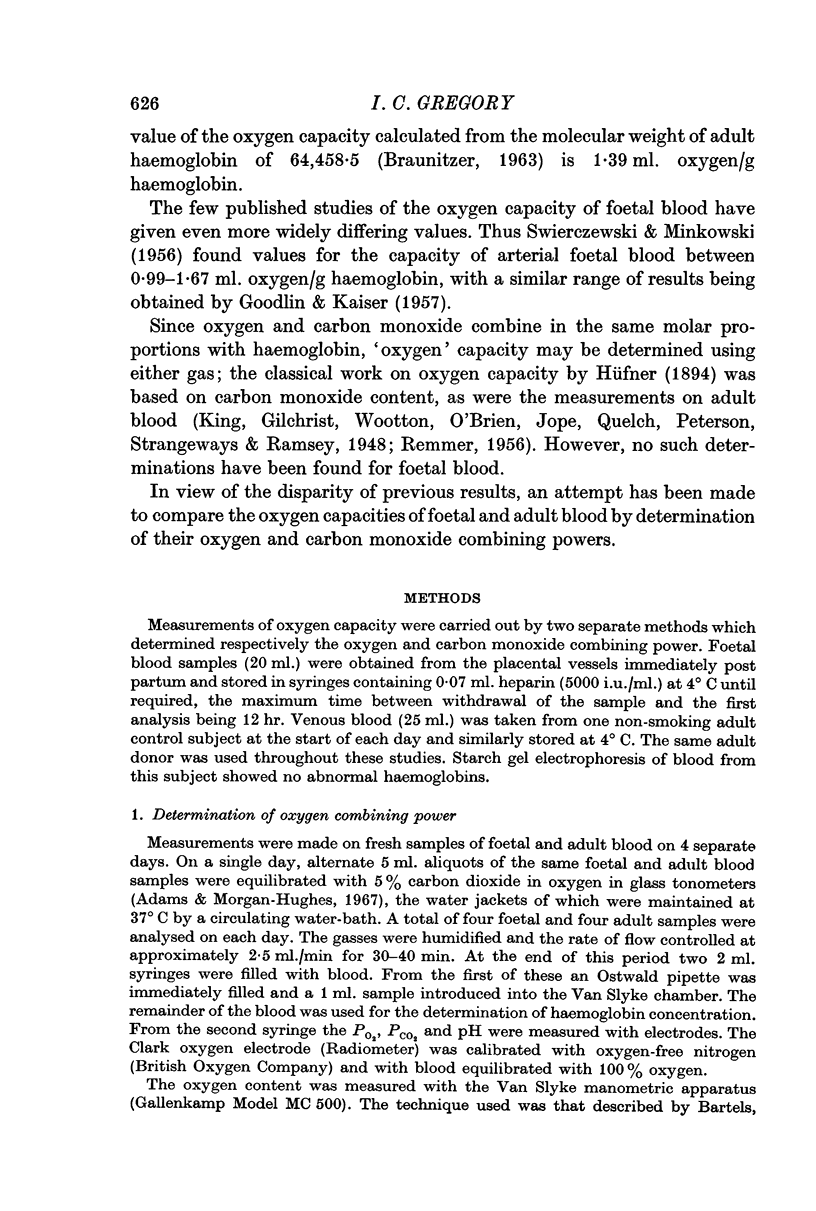
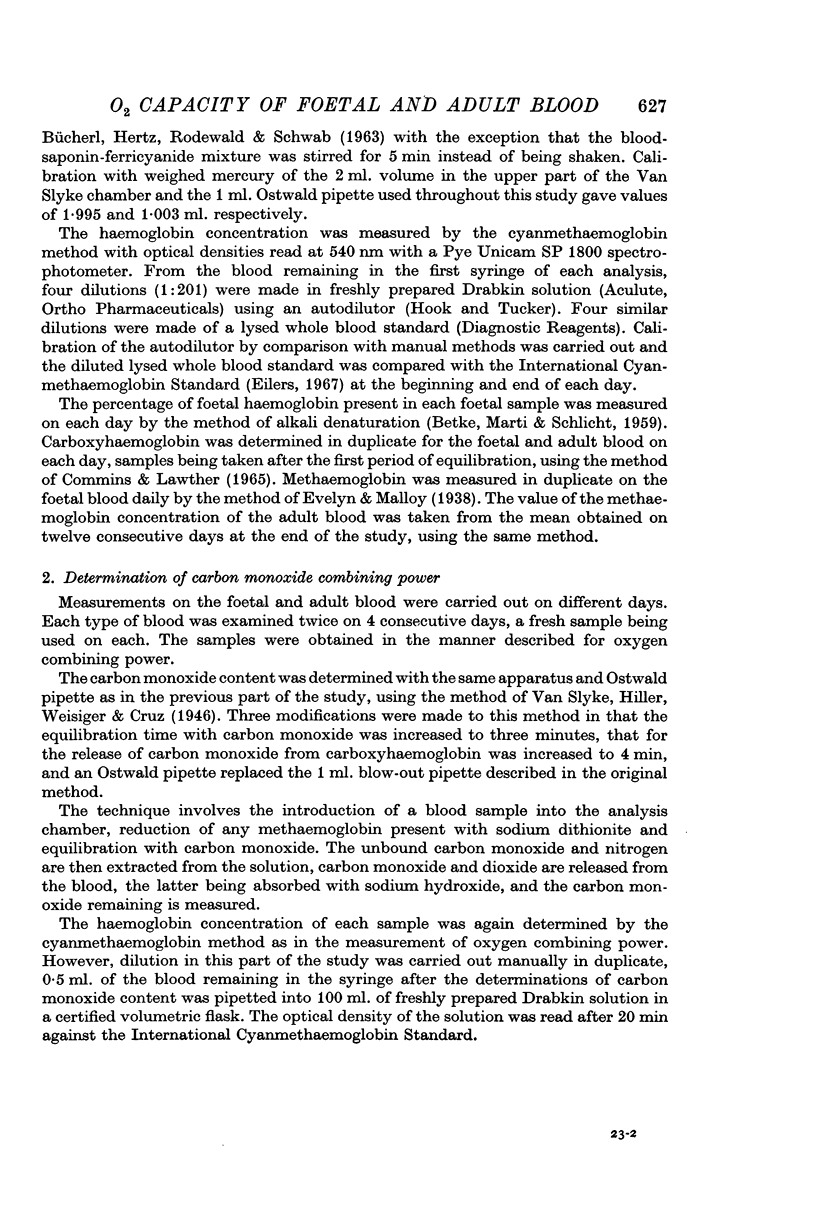
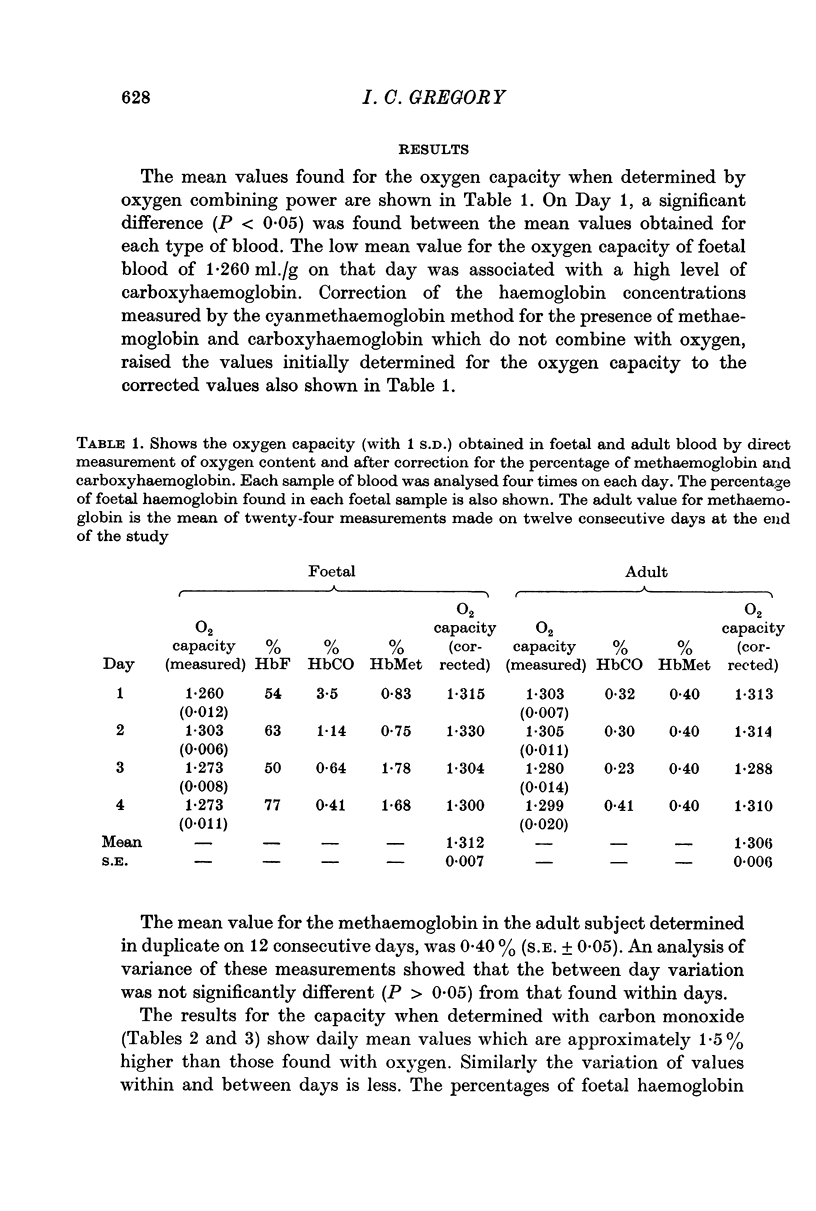
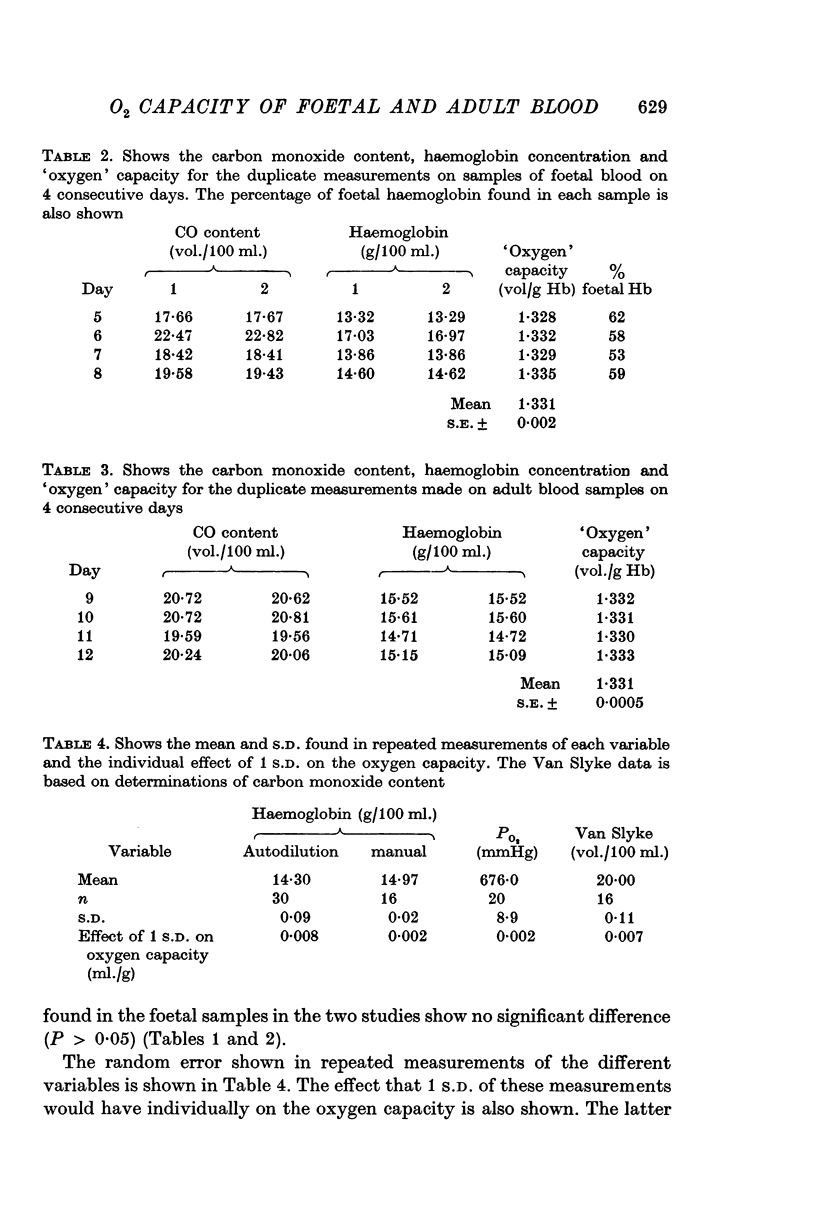
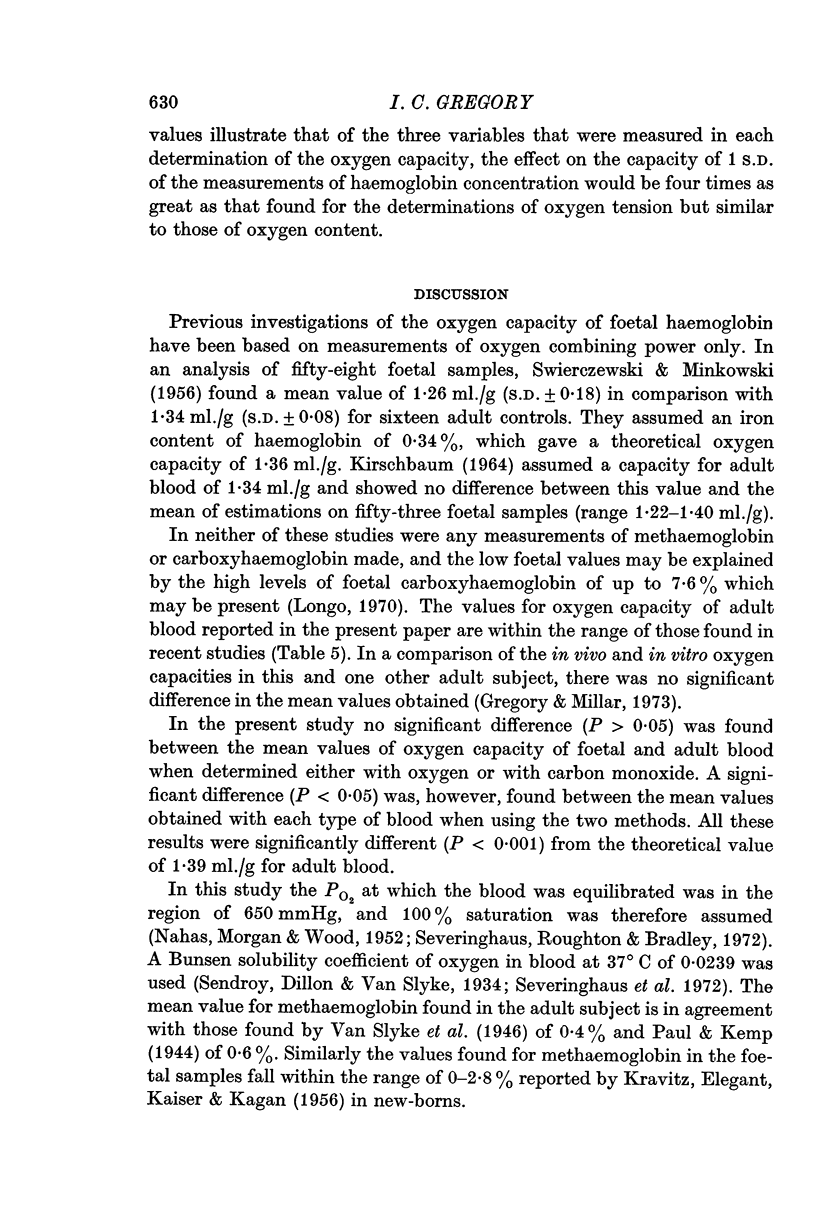
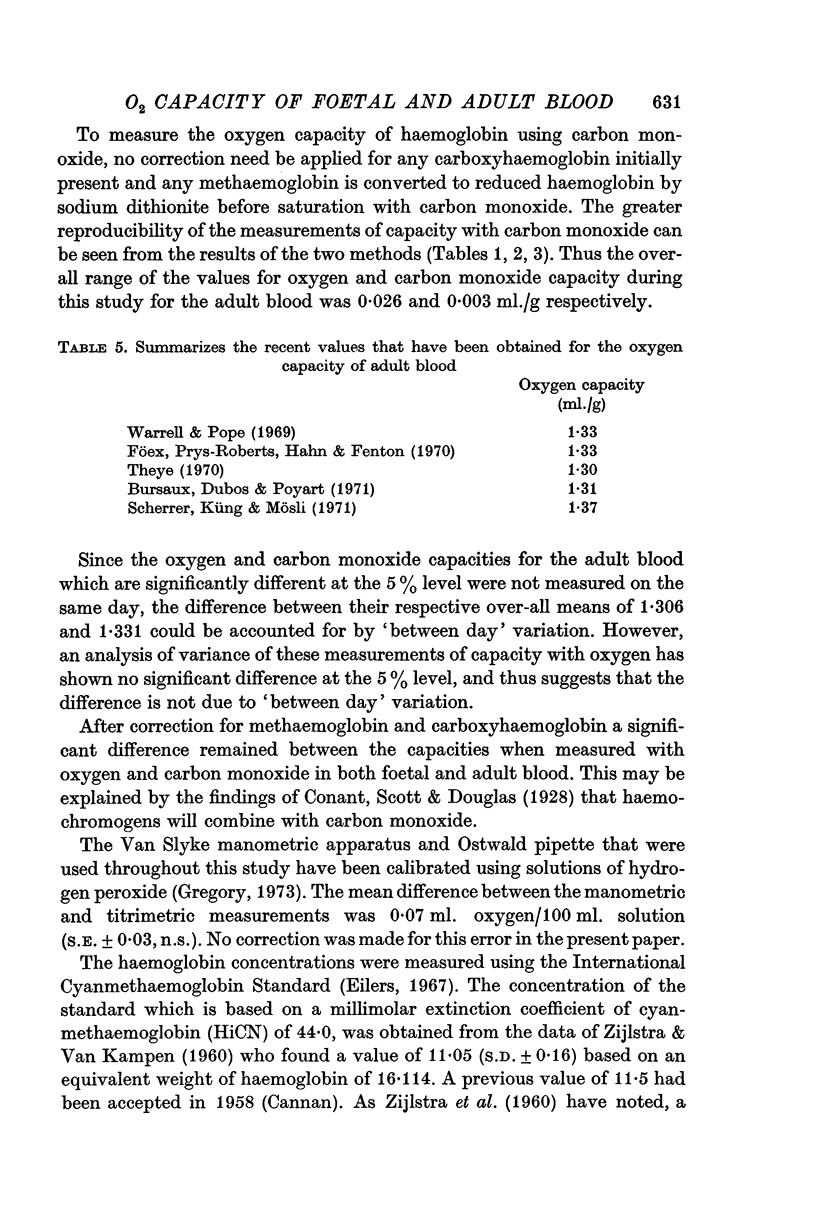
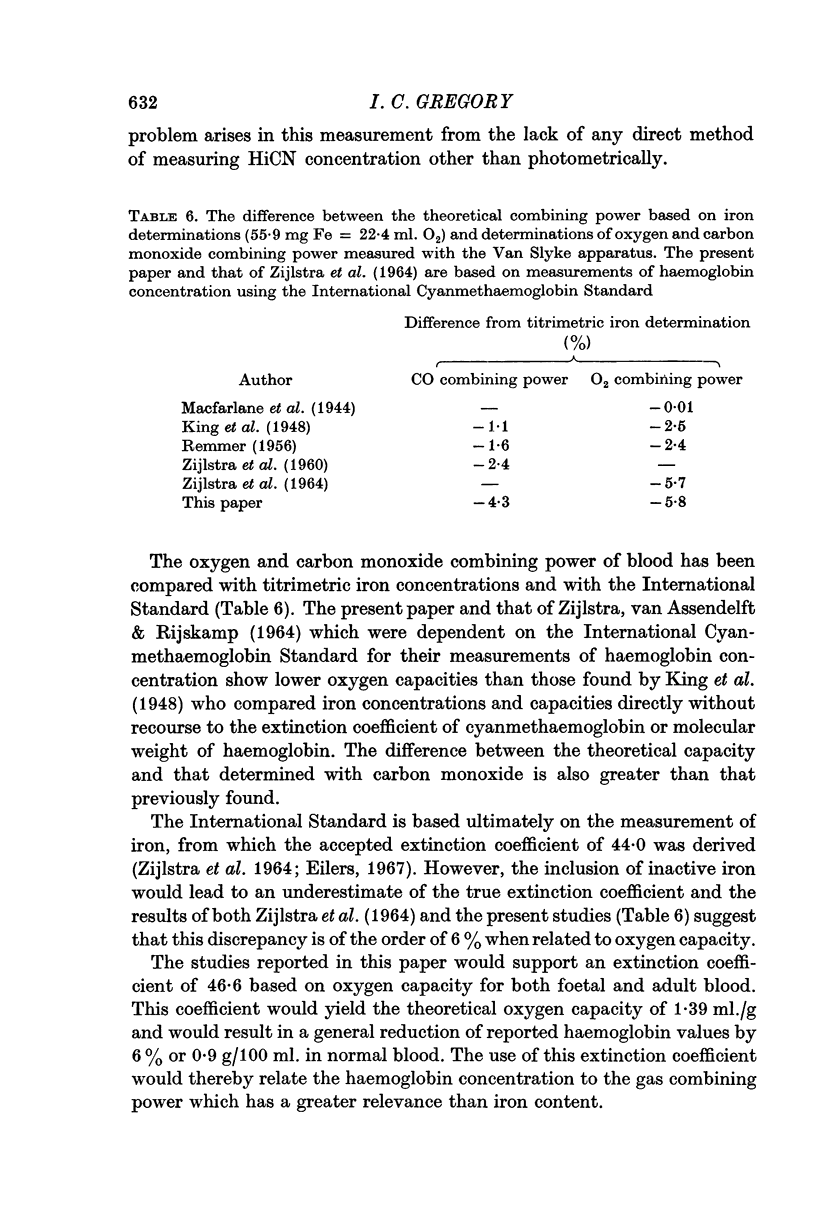
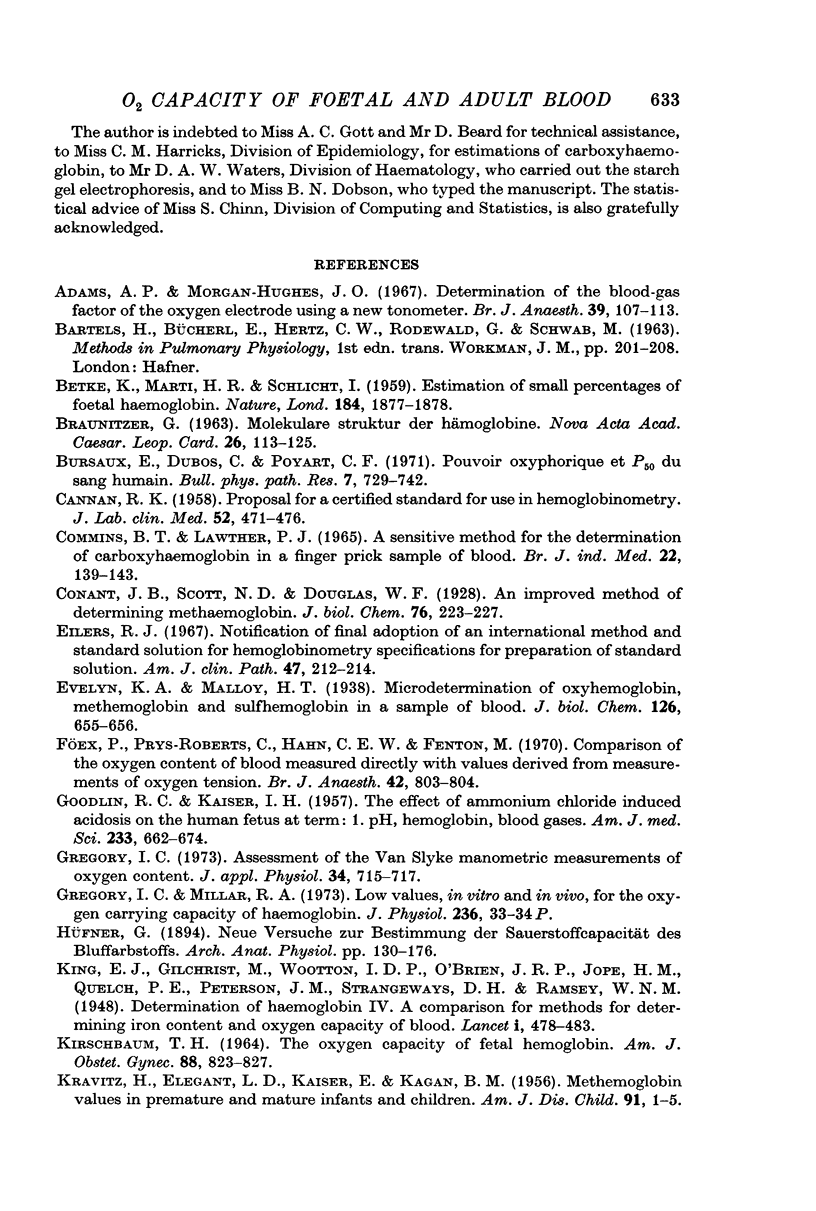
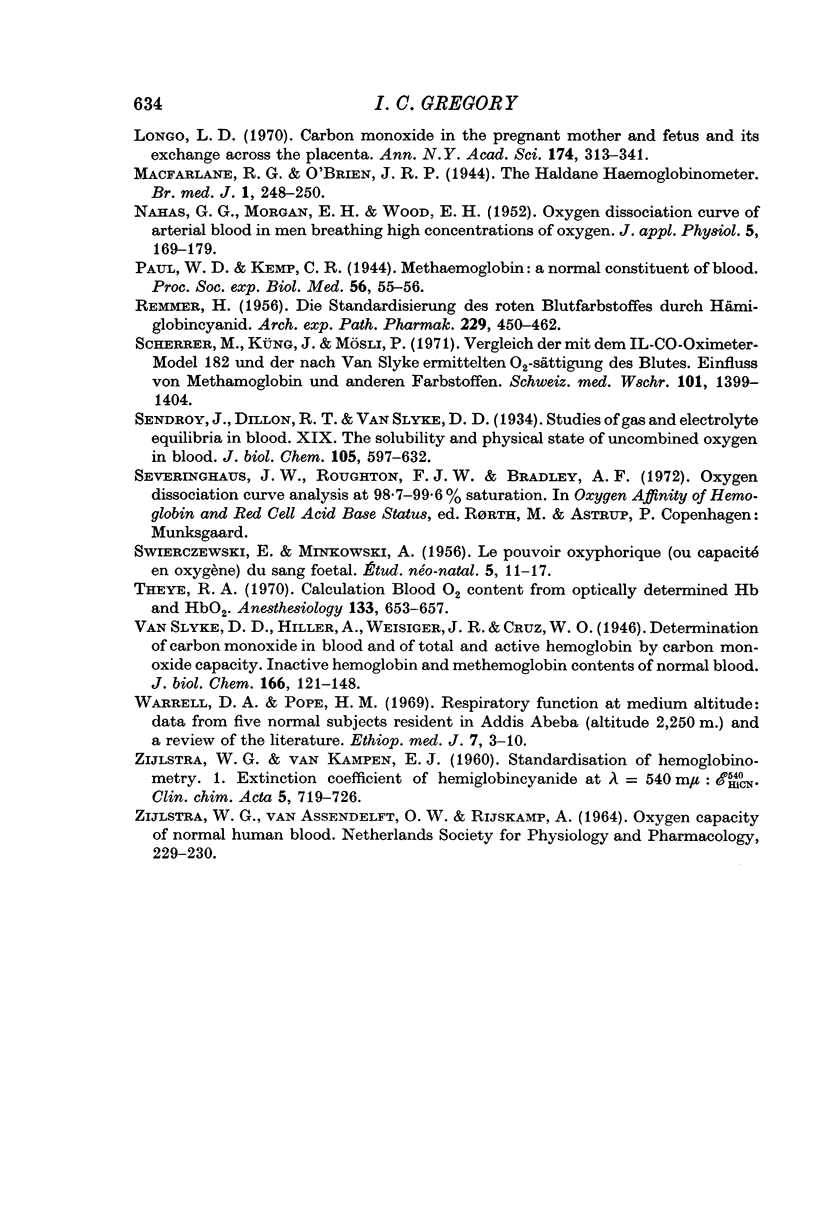
Selected References
These references are in PubMed. This may not be the complete list of references from this article.
- Adams A. P., Morgan-Hughes J. O. Determination of the blood-gas factor of the oxygen electrode using a new tonometer. Br J Anaesth. 1967 Feb;39(2):107–113. doi: 10.1093/bja/39.2.107. [DOI] [PubMed] [Google Scholar]
- BETKE K., MARTI H. R., SCHLICHT I. Estimation of small percentages of foetal haemoglobin. Nature. 1959 Dec 12;184(Suppl 24):1877–1878. doi: 10.1038/1841877a0. [DOI] [PubMed] [Google Scholar]
- Bursaux E., Dubos C., Poyart C. F. Pouvoir oxyphorique et P 50 du sang humain. Bull Physiopathol Respir (Nancy) 1971 Jul-Aug;7(4):729–742. [PubMed] [Google Scholar]
- CANNAN R. K. Proposal for a certified standard for use in hemoglobinometry; second and final report. J Lab Clin Med. 1958 Sep;52(3):471–476. [PubMed] [Google Scholar]
- COMMINS B. T., LAWTHER P. J. A SENSITIVE METHOD FOR THE DETERMINATION OF CARBOXYHAEMOGLOBIN IN A FINGER PRICK SAMPLE OF BLOOD. Br J Ind Med. 1965 Apr;22:139–143. doi: 10.1136/oem.22.2.139. [DOI] [PMC free article] [PubMed] [Google Scholar]
- Eilers R. J. Notification of final adoption of an international method and standard solution for hemoglobinometry specifications for preparation of standard solution. Am J Clin Pathol. 1967 Feb;47(2):212–214. doi: 10.1093/ajcp/47.2.212. [DOI] [PubMed] [Google Scholar]
- Foëx P., Prys-Roberts C., Hahn C. E., Fenton M. Comparison of oxygen content of blood measured directly with values derived from measurements of oxygen tension. Br J Anaesth. 1970 Sep;42(9):803–804. [PubMed] [Google Scholar]
- GOODLIN R. C., KAISER I. H. The effect of ammonium chloride induced maternal acidosis on the human fetus at term. I. pH, hemoglobin, blood gases. Am J Med Sci. 1957 Jun;233(6):662–674. doi: 10.1097/00000441-195706000-00009. [DOI] [PubMed] [Google Scholar]
- Gregory I. C. Assessment of Van Slyke manometric measurements of oxygen content. J Appl Physiol. 1973 May;34(5):715–717. doi: 10.1152/jappl.1973.34.5.715. [DOI] [PubMed] [Google Scholar]
- Gregory I. C., Millar R. A. Proceedings: Low values, in vitro and in vivo, for the oxygen-carrying capacity of haemoglobin. J Physiol. 1974 Jan;236(1):33P–34P. [PubMed] [Google Scholar]
- KIRSCHBAUM T. H. THE OXYGEN CAPACITY OF FETAL HEMOGLOBIN. Am J Obstet Gynecol. 1964 Mar 15;88:823–827. doi: 10.1016/0002-9378(64)90619-2. [DOI] [PubMed] [Google Scholar]
- KRAVITZ H., ELEGANT L. D., KAISER E., KAGAN B. M. Methemoglobin values in premature and mature infants and children. AMA J Dis Child. 1956 Jan;91(1):1–5. doi: 10.1001/archpedi.1956.02060020003001. [DOI] [PubMed] [Google Scholar]
- King A. J., Cooke N. J., McCuish A., Clarke B. F., Kirby B. J. Acid-base changes during treatment of diabetic ketoacidosis. Lancet. 1974 Mar 23;1(7856):478–481. doi: 10.1016/s0140-6736(74)92786-x. [DOI] [PubMed] [Google Scholar]
- Longo L. D. Carbon monoxide in the pregnant mother and fetus and its exchange across the placenta. Ann N Y Acad Sci. 1970 Oct 5;174(1):312–341. doi: 10.1111/j.1749-6632.1970.tb49798.x. [DOI] [PubMed] [Google Scholar]
- NAHAS G. G., MORGAN E. H., WOOD E. H. Oxygen dissociation curve of arterial blood in men breathing high concentrations of oxygen. J Appl Physiol. 1952 Oct;5(4):169–179. doi: 10.1152/jappl.1952.5.4.169. [DOI] [PubMed] [Google Scholar]
- REMMER H. Die Standardisierung des roten Blutfarbstoffes durch Hämiglobincyanid. II. Eisengehalt und O2-Bindungsvermögen von menschlichem Blut. Naunyn Schmiedebergs Arch Exp Pathol Pharmakol. 1956;229(5):450–462. [PubMed] [Google Scholar]
- SWIERCZEWSKI E., MINKOWSKI A. Le pouvoir oxyphorique (ou capacité en oxygène) du sang artériel foetal. Etudes Neonatales. 1956 Mar;5(1):11–17. [PubMed] [Google Scholar]
- Scherrer M., Küng J., Mösli P. Vergleich der mit dem IL-CO-Oximeter-Model 182 und der nach Van Slyke ermittelten Oxygen-Sättigung des Blutes. Einfluss von Methämoglobin und anderen Farbstoffen. Schweiz Med Wochenschr. 1971 Oct 2;101(39):1399–1404. [PubMed] [Google Scholar]
- Theye R. A. Calculation of blood O2 content from optically determined Hb and HbO2. Anesthesiology. 1970 Dec;33(6):653–657. doi: 10.1097/00000542-197012000-00016. [DOI] [PubMed] [Google Scholar]
- ZIJLSTRA W. G., van KAMPEN E. Standardization of hemoglobinometry. I. The extinction coefficient of hemiglobincyanide. Clin Chim Acta. 1960 Sep;5:719–726. doi: 10.1016/0009-8981(60)90014-0. [DOI] [PubMed] [Google Scholar]


